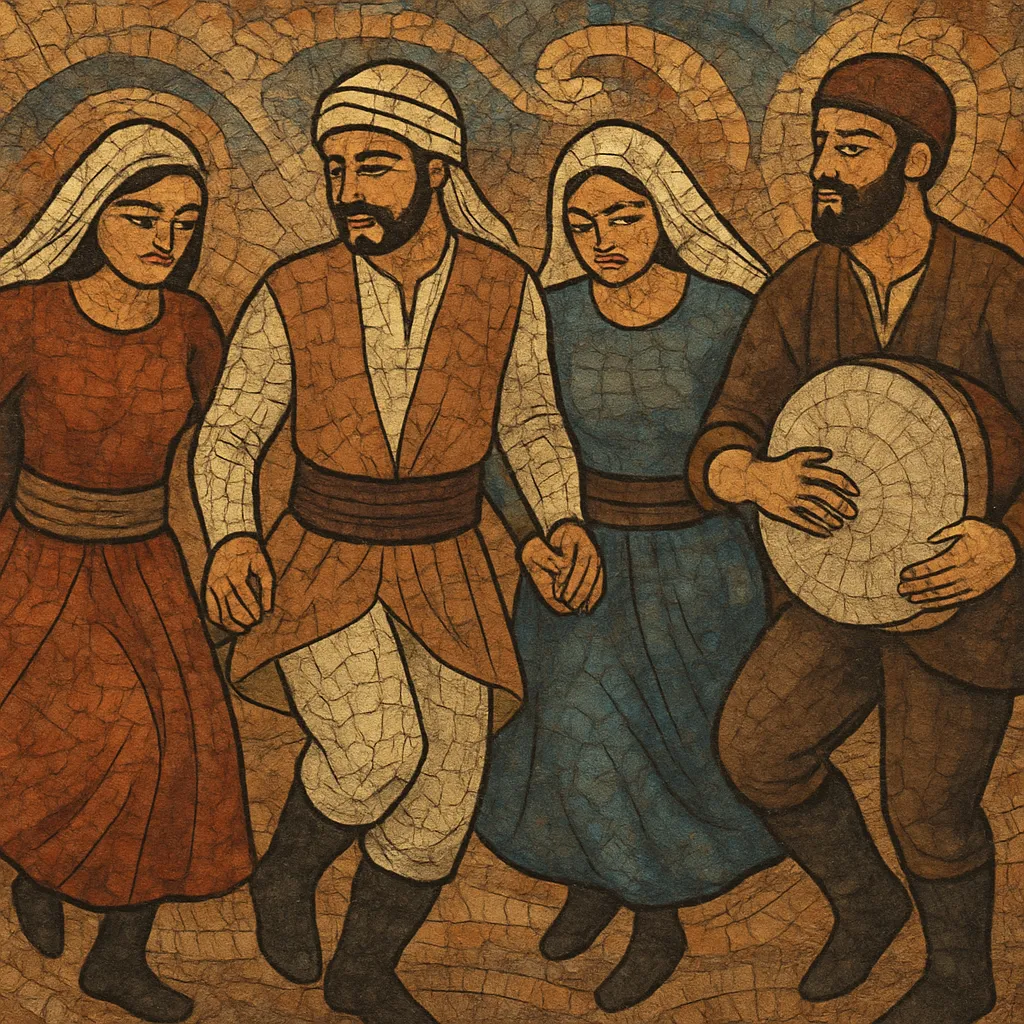Dabke is a Levantine line-dance music style built for communal celebration, especially weddings and village festivals. It features driving, repetitive rhythms, emphatic foot-stomps, and call-and-response vocals that invite audience participation.
Musically, dabke leans on Arabic maqam-based melodies (often Bayati, Hijaz, Kurd, Nahawand, or Rast) performed on folk timbres such as mijwiz (double-reed), zurna/mizmar, yarghul, oud, and regional percussion (darbuka/tabla, riq, daff, tapan). Modern dabke frequently uses synths, arranger keyboards, and drum machines to deliver a louder, dancefloor-ready sound.
Common rhythmic feels include 2/4 (malfuf), 4/4 (maqsum/sa’idi), and 6/8 (dal’ouna), with tempos typically ranging from brisk to very energetic. Lyrics often center on pride, love, place, and togetherness, with refrains designed for easy group singing and sustained dancing.
Dabke began as a communal line dance across the Levant, with roots in agrarian and village life in what is now Lebanon, Syria, Palestine, and Jordan. While the dance itself is older, the codified musical style associated with recorded and staged dabke took clearer shape in the mid-20th century as regional folk idioms were arranged for ensembles and, later, for amplified performance.
In Lebanon, large festivals and theater revues helped formalize folk repertoires for the stage. Composers and bandleaders arranged village dance tunes (e.g., dal’ouna and mejana) for modern ensembles, spreading dabke beyond local contexts and onto radio and records. During this period, the instrumentation broadened from acoustic reeds and percussion to include oud, buzuq, and early electrified setups, fixing the core rhythmic patterns and audience call-and-response as genre signatures.
The explosion of wedding entertainment and the cassette economy propelled dabke throughout the Levant. Portable PA systems and arranger keyboards (popular Korg and Yamaha models) empowered small groups and solo performers to deliver big, rhythm-forward shows. The sound became denser and more beat-driven, with thundering tapan/tabla combinations and piercing lead reeds (mijwiz, zurna) or synthesized equivalents.
Artists from Syria, Lebanon, Palestine, and the diaspora began blending dabke with electronic dance aesthetics, rock backlines, and global bass. Syrian singer Omar Souleyman’s high-BPM wedding repertoire reached international stages, while bands like 47SOUL framed “shamstep” (electro-dabke) for global club audiences. Today, dabke thrives both as a living folk tradition at social gatherings and as a modern, high-energy club form showcased at festivals worldwide.


